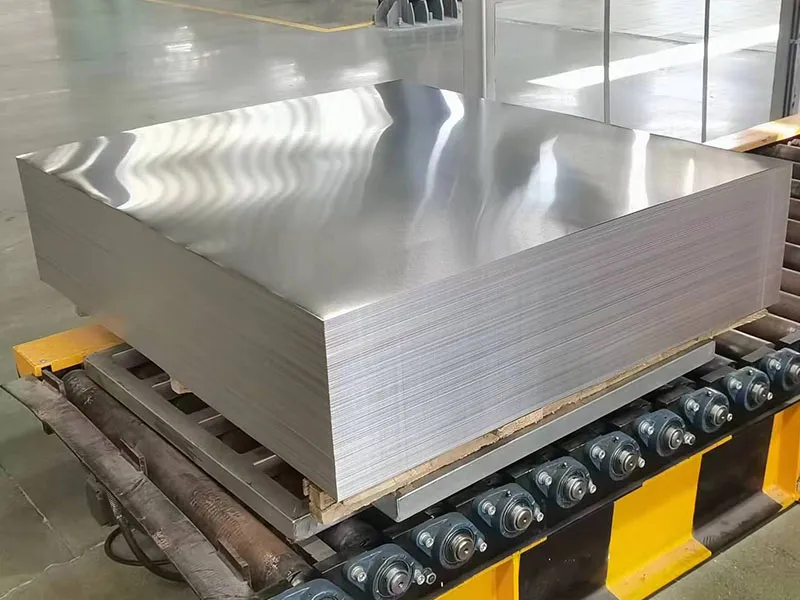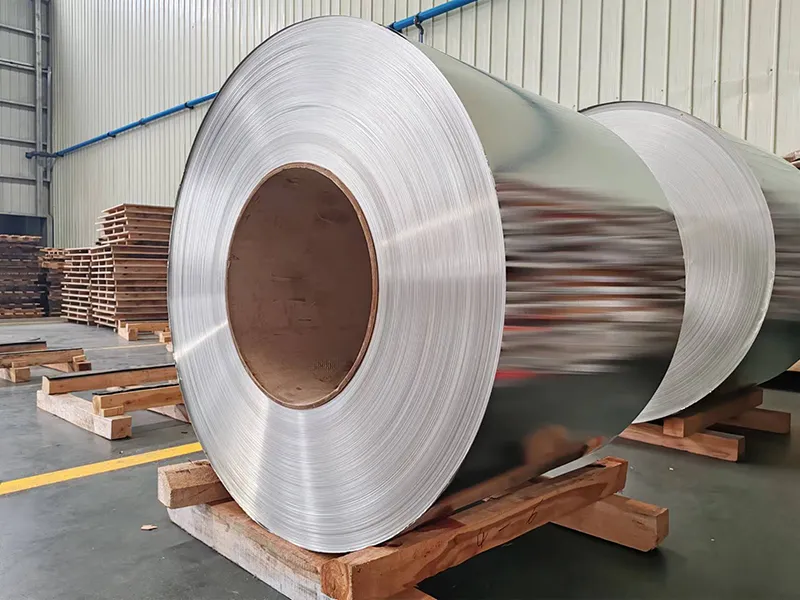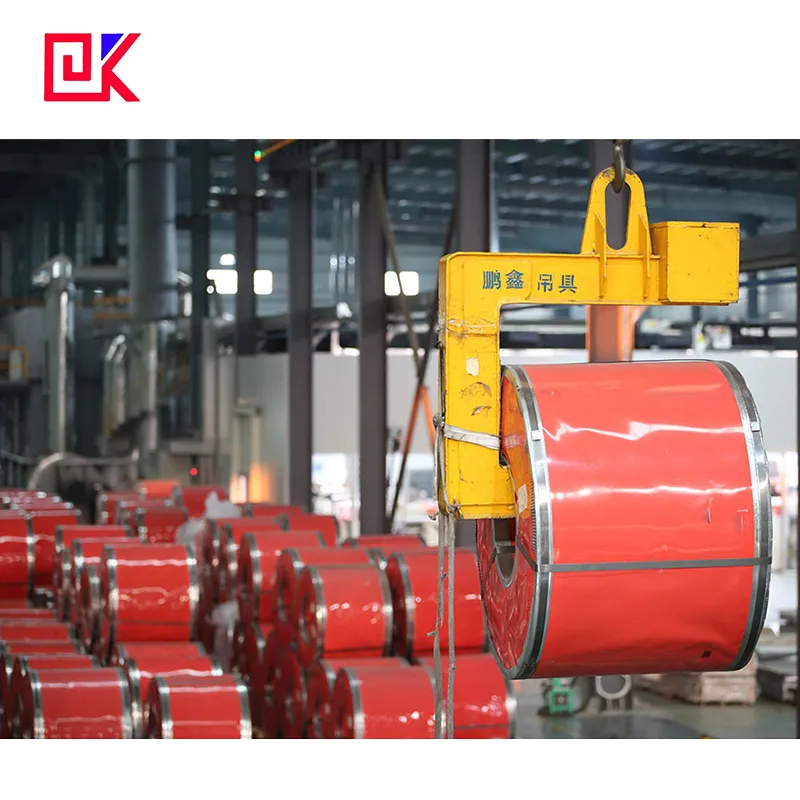In the packaging industry, especially in the fields of food, chemicals and pharmaceuticals, the anti-corrosion performance of packaging materials has always been a crucial consideration. Especially for those products that are susceptible to oxidation, moisture or other external environments, choosing the right packaging material can extend the shelf life of the product and ensure its quality. Among the many packaging materials, electrolytic tinplate has become one of the most widely used materials due to its excellent anti-corrosion performance.
Today, let's take a closer look at the anti-corrosion performance of electrolytic tin plate packaging and understand why it has become an important choice in the industry.

The concept of electrolytic tinplate packaging
What is electrolytic tinplate?
Electrolytic tin plate, as the name suggests, is tinplate treated by an electrolytic process. Tinplate itself is a thin sheet made of steel material, and its surface is covered with a layer of tin, which is usually used to prevent iron from rusting and oxidation. After electrolytic treatment, the quality of this tin layer is further improved, making electrolytic tinplate have higher performance in terms of corrosion resistance and durability. Electrolytic treatment can make the tin layer more uniform and dense, thereby enhancing its anti-corrosion and moisture-proof functions.
Compared with traditional tinplate, electrolytic tin plate has better anti-corrosion effect and stronger adaptability, so it is particularly favored in the packaging field. Electrolytic tinplate not only has good physical strength and stability, but also can maintain effective protection for a long time in harsh environments.
What is the anti-corrosion mechanism of electrolytic tin plate?
The anti-corrosion performance of electrolytic tinplate mainly comes from the tin layer. Tin is a metal that has strong antioxidant properties and is not easy to react with oxygen in the air, so it can effectively prevent the oxidation process on the iron surface. The electrolysis process of the tin layer makes it more evenly and firmly attached to the surface of the iron plate, thus providing a solid protective layer for the iron plate.
In addition, the tin layer on the surface of the electrolytic tin plate can also react with moisture or other corrosive substances in the air to form a "protective film", further improving its corrosion resistance. This protective film helps to reduce the contact between external corrosive factors and the iron surface, thereby extending the service life of the packaging.

How does the anti-corrosion performance of electrolytic tin plate meet industry needs?
Why is anti-corrosion performance so important for packaging materials?
In the packaging industry, especially in the fields of food, chemicals and pharmaceuticals, anti-corrosion performance is directly related to product safety, shelf life and the final consumer experience. If the packaging material cannot effectively prevent the erosion of external factors such as oxygen, moisture and salt on the product, it will not only cause damage to the packaging, but also affect the quality of the internal items and even cause the product to deteriorate.
For example, in food packaging, oxidation is one of the main causes of food spoilage. If the packaging material used cannot effectively prevent oxidation reactions, it may cause problems such as mildew and deterioration of food during transportation or storage. Therefore, the anti-corrosion performance requirements of food packaging materials are very strict. And electrolytic tinplate, with its excellent anti-corrosion properties, can just meet this demand.
How does the anti-corrosion performance of electrolytic tinplate ensure food safety?
The requirements for anti-corrosion performance in food packaging are particularly demanding. In addition to common oxygen and moisture, food may be exposed to a variety of environmental factors such as temperature and light during storage, which may accelerate the deterioration of food. Due to its unique anti-corrosion properties, electrolytic tinplate packaging can effectively isolate the influence of external factors and protect the quality of food.
● Oxygen barrier property: The tin layer on the surface of electrolytic tin plate can effectively prevent oxygen from contacting the iron surface, reduce the occurrence of oxidation reactions, and thus extend the shelf life of food.
● Moisture resistance: Electrolytic tin plate materials have good moisture resistance, which can effectively avoid moisture penetration and prevent products from being damaged in a humid environment.
● Corrosion resistance: Since the tin layer after electrolytic treatment is more solid and uniform, it can form a protective film to protect the contents of the package from the influence of external corrosive substances.
These characteristics of electrolytic tinplate make it an ideal packaging material in the food industry, especially for storing foods that are easily affected by the environment, such as coffee, tea, candy, etc.
Anti-corrosion advantages of electrolytic tin plate in chemical packaging
The packaging requirements for chemicals are more stringent, because many chemicals contain corrosive substances, which may cause serious damage to packaging materials. The application of electrolytic tin plate in chemical packaging can effectively prevent the penetration of these corrosive substances and ensure the integrity and safety of the packaging.
For example, in the packaging of chemicals such as detergents and sprays, electrolytic tin plate, with its high strength and corrosion resistance, can provide an effective barrier for these products, prevent chemicals from reacting with packaging, maintain product quality and extend storage period. Especially for chemicals that need to be protected from sunlight, electrolytic tinplate packaging can provide better light protection.
How does electrolytic tinplate ensure the safety of pharmaceutical packaging?
The packaging of pharmaceuticals requires not only corrosion protection, but also the ability to prevent the infiltration of external pollutants. Electrolytic tin plate also performs very well in this regard. Since pharmaceuticals have extremely high requirements for the sealing and corrosion resistance of packaging, electrolytic tinplate packaging can effectively prevent external substances from entering the packaging container, thereby ensuring the effectiveness and safety of the pharmaceuticals.
In addition, pharmaceutical packaging often needs to have certain antioxidant and moisture-proof capabilities, and the advantages of electrolytic tin plate in these aspects make it an ideal choice for pharmaceutical packaging. For example, some high-end pharmaceuticals and vitamins usually need to be stored under strict protection, while electrolytic tinplate provides a stable protective barrier.

How does the anti-corrosion performance of electrolytic tinplate ensure safe use?
How to evaluate the safety of electrolytic tinplate packaging?
While electrolytic tin plate packaging materials are corrosion-resistant, they must also meet strict food safety standards. Since the surface of electrolytic tinplate is coated with tin, this layer of tin must meet food grade requirements and contain no harmful substances. In addition, the electrolytic process itself needs to meet international standards to ensure the safety of the entire packaging process.
The production process of electrolytic tin plate undergoes strict quality control to ensure that its coating is uniform and stable, and does not dissolve any harmful substances to the food or chemicals in the package during long-term use. Therefore, electrolytic tinplate not only provides strong corrosion resistance, but also ensures the safety of consumers during use.
How to test the anti-corrosion effect of electrolytic tinplate?
In order to ensure the anti-corrosion performance of electrolytic tin plate packaging, manufacturers usually conduct a variety of tests on packaging materials, including but not limited to:
● Salt spray test: Test the corrosion resistance of electrolytic tin plate in a high-salt environment to ensure that it can still maintain good anti-corrosion performance in humid environments such as marine climates.
● Humidity test: Test the moisture resistance of electrolytic tin plate by simulating a humid environment to evaluate its anti-corrosion effect under high humidity conditions.
● Oxygen permeation test: Evaluate the oxygen isolation ability of electrolytic tin plate materials and test whether it can effectively prevent the occurrence of oxidation reactions during long-term storage.
These tests ensure that electrolytic tinplate packaging can effectively resist various corrosive factors, thereby ensuring the long-term safety of the product.

Foshan Dekai Metal Packaging Co., Ltd. offers comprehensive metal packaging services, including tinplate printing and aerosol can production. With a 50,000-square-meter factory in Foshan, China, and advanced FUJI printing technology, we produce over 300 million units annually. As an ISO9001-certified manufacturer, we provide reliable supply for bulk orders, wholesale deals, and promotional pricing. Whether you need custom packaging or affordable solutions, we are your trusted partner for high-quality metal packaging. Get in touch for quotes and discounts.

